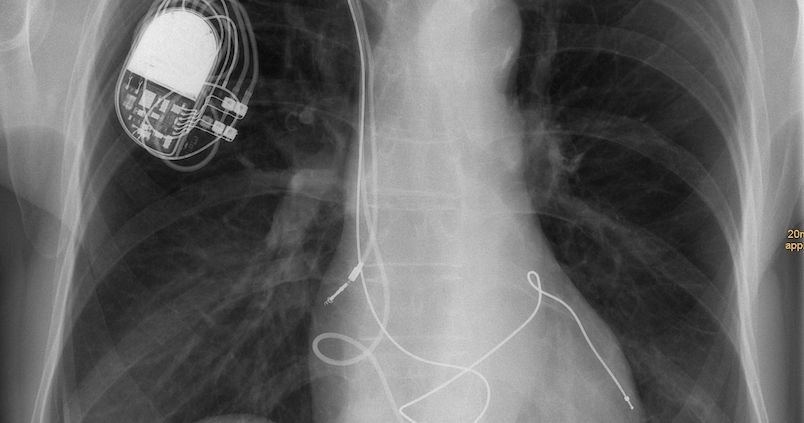A Pacemaker that Restores Heart Function
Patricia Siedlecki was 64 when she was diagnosed with congestive heart failure. Over the next several years she would become more and more fatigued and winded from a weakening heart. Her heart enlarged even though she took heart medications and religiously did her cardiac rehab. She required more and more diuretics just to keep her lungs from filling up with fluid.
Patricia’s cardiologist, Dr. Mark Kraemer, a heart failure specialist at MHVI, became increasingly convinced that her deterioration was from a left bundle branch block, a sign that different parts of her weakened heart were not timed correctly, resulting in an inefficient heart pump. He talked with her repeatedly about getting a biventricular pacemaker to “re-time” the left and right sides of her heart so it could pump blood more efficiently. “I think I was in some sort of denial,” Patricia said, “because I wanted no part of it. I really had a hard time accepting that I had a heart problem.”
 Eventually, Patricia’s heart pump weakened to the point where she could barely walk into clinic from her car to see her doctors. She needed to ride a cart just to do grocery shopping. Previously an independent woman, she increasingly relied on her daughter to do simple chores for her at home. Finally, five years after her diagnosis of heart failure, she agreed to receive a biventricular pacemaker-defibrillator. Dr. Joseph Lin, an MHVI heart rhythm specialist, performed this implant at Mercy Hospital. Within months, Patricia’s heart responded to the pacing and her heart pumped more efficiently. It went from being severely reduced in function to normal function. Looking back, Patricia says, “I should have listened to Dr. Kraemer and had this done sooner. I feel wonderful now. She reported recently, “My energy level has improved. I am doing my house chores.” She boasts, “I am very active socially.”
Eventually, Patricia’s heart pump weakened to the point where she could barely walk into clinic from her car to see her doctors. She needed to ride a cart just to do grocery shopping. Previously an independent woman, she increasingly relied on her daughter to do simple chores for her at home. Finally, five years after her diagnosis of heart failure, she agreed to receive a biventricular pacemaker-defibrillator. Dr. Joseph Lin, an MHVI heart rhythm specialist, performed this implant at Mercy Hospital. Within months, Patricia’s heart responded to the pacing and her heart pumped more efficiently. It went from being severely reduced in function to normal function. Looking back, Patricia says, “I should have listened to Dr. Kraemer and had this done sooner. I feel wonderful now. She reported recently, “My energy level has improved. I am doing my house chores.” She boasts, “I am very active socially.”
For certain patients with congestive heart failure, a biventricular pacemaker can markedly improve their energy level and quality of life. By “re-timing” the way the left and right sides of the heart contract, a process called cardiac resynchronization, many patients in the heart failure program at MHVI have seen tremendous recovery in their heart function.



Leave a Reply
Want to join the discussion?Feel free to contribute!